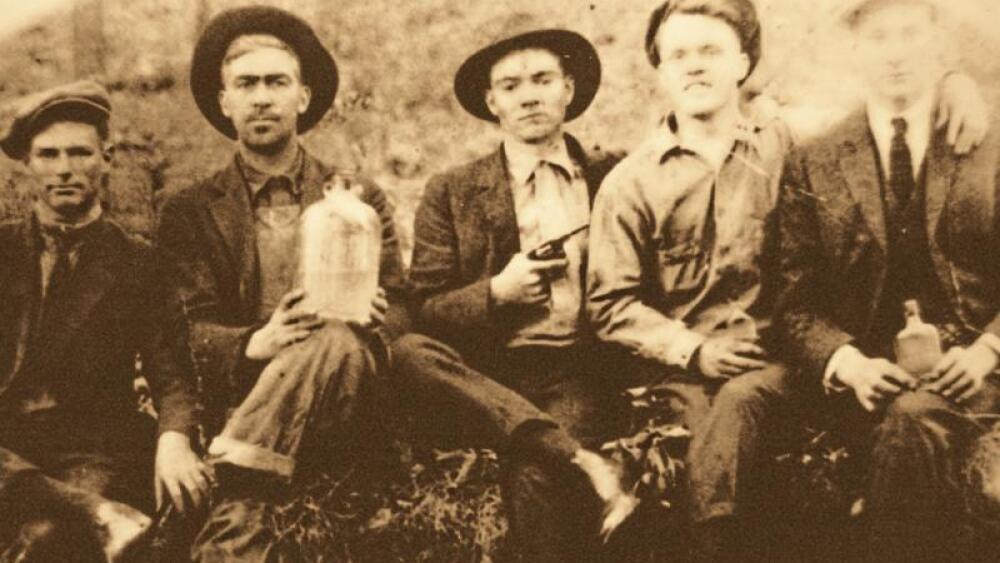There’s a part of the Upstate that belongs to a region in the Southeast called the Dark Corner – a close knit community with deep roots + a history marked by nullification, moonshine, and to a degree, continued secrecy.
The Dark Corner exists in the northeastern portion of Greenville County in the Glassy Mountain Township + parts of surrounding townships. Tyron, NC borders the Dark Corner on the north, and Spartanburg County borders it on the east.
The elusive name the “Dark Corner” has several potential origins. One school of thought dates back to 1872, following the Civil War, during which time this particular region of SC was known for political unrest. At a campaign meeting, a politician was standing on a cart + speaking to a crowd. His message was less than well-received, so some of the men in the crowd took the cart and ran with it, politician in tow. The speaker fell out, and is quoted as standing up and saying, “You people up here are in the dark – you don’t understand what’s going on.”
The most widely accepted history of the name comes from 1832 during the Nullification Crisis, when South Carolinians were deciding whether to nullify federal tariffs imposed by Andrew Jackson’s administration. SC legislature eventually voted in favor of nullification, but one precinct in Greenville County, Glassy Mountain Township, was strongly opposed by a vote of 169 to 1. In a speech addressing the matter, a local politician is quoted as saying “the bright light of nullification will never shine in that corner of South Carolina.”
However it came to be, the Dark Corner has a storied past.
For hundreds of years, the land belonged to the Cherokee Nation. In the Treaty of DeWitt’s Corner in 1777, they were forced to cede most parts of Oconee, Pickens, Anderson, and Greenville counties. Battles of the American Revolution were also fought here, like the Battle of Earle’s Ford in 1780, which had its beginning at Gowen’s Fort (the revolutionary fort for which Gowensville is named).
A handful of mills dating back to the early 1800’s still stand throughout the Dark Corner, marking the importance of crops like corn + wheat. Moonshining is an undeniable part of the Dark Corner’s history (yes, that is where the The Dark Corner Distillery gets its name), but the practice surged during the Reconstruction era, when struggling farmers realized they could make significantly more money by using their grains to make alcohol. To avoid government taxation on liquor, moonshiners would often hide their stills in the mountains.
Today, the Dark Corner exists as a beautiful + proud mountain community. To better understand the Dark Corner, past and present, we took a tour with one of the people who knows it best – Dean Campbell, a historian who began studying the area at the age of 14, and who is also known as the Squire of Dark Corner. Here are a few (of the many) places he brought us:
- Poinsett Bridge: The oldest standing bridge in the state was built in the Dark Corner in 1820 and named for Joel R. Poinsett, who also happens to be responsible for the presence of the poinsettia flower in the US.
- Gowensville: This town is the Dark Corner’s oldest settlement. Head to The First Baptist Church, which was established in 1820, to find historical gravesites for some of the Dark Corner’s notable residents. Gowensville Seminary, which was one of the region’s foremost educational institutions at the time, was located on the church site. Founder Rev. Thomas J. Earle’s home and the seminary were listed on the official Bicentennial List of Historic Sites.
- Campbell’s Covered Bridge: Another bridge built in the Dark Corner region, Campbell’s Covered Bridge was built in 1909 and is the last surviving, extant (stands where built), covered bridge in SC.
Dean’s tour was astoundingly full of history, shared alongside personal stories of his upbringing in the region. He showed us that the Dark Corner is the type of place where you’ll find panoramic views of the Blue Ridge Mountains and U-pick blueberry patches with an “honor system” pay box. He told us that the Dark Corner is a community that has embraced its roots + rich history – evidenced in The Dark Corner group on Facebook, which is filled with family photos and people connecting over their ancestral ties to the region.
Dean also instilled the importance of sharing all that the Dark Corner has to offer. Ready to learn more? In addition to offering tours, you can check out one of the books Dean Campbell has produced on the Dark Corner, or see how you can watch The Dark Corner, a documentary here.















